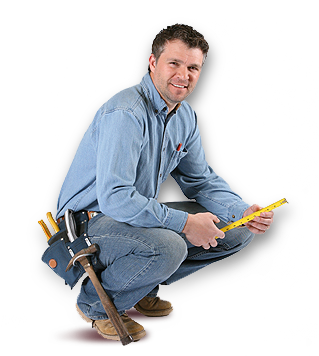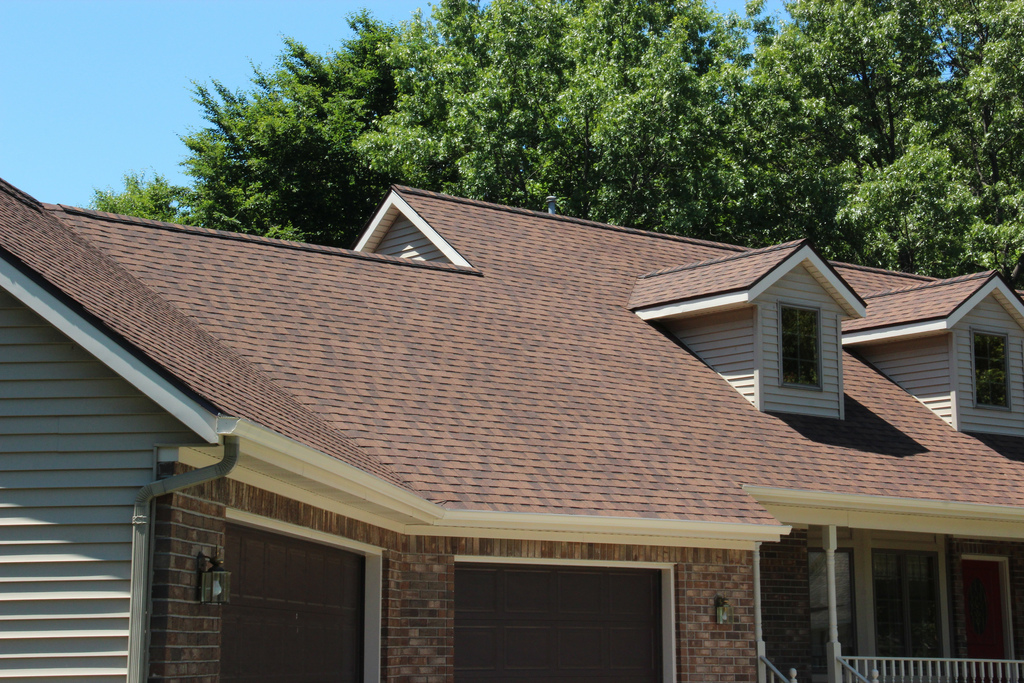
by Ben Johnson | Dec 28, 2016 | Roof Maintenance, Roof Repair, West Michigan Roofing Blog
Once a home has been built, it’s easy to forget about your roof. We take for granted the fact that it’s holding off all of the rain, wind, and snow that accumulates in West Michigan weather, and we trust it to keep us safe. But when you forget about your roof for too long, you actually start to lose money. The more time that passes without a roof inspection or maintenance, the closer you’re getting to a hefty repair fee or even a full re-roofing job that you simply don’t want to pay for. The fact is, a neglected roof is an expensive roof, and we’ll explain why:
Leaks
The first thing that happens when your roof goes for too long without inspection or repair, is that it begins to develop leaks. In fact, leaks often occur way before you even notice them. By the time that you start to see drips coming through the house, you will already have far more water damage than just a simple leak. That’s why it’s so important to have your home’s roof regularly inspected. A roofing professional will be able to spot leaks before they become larger problems and fix them accordingly.
Mold
Once you have leaks, you’re bound to get mold. Unfortunately, that’s just one of the simple truths of homeownership. The base structure of most residential roofs is wood, which is an organic material that absorbs moisture. As moisture seeps into the wood, mold begins to grow and spread spores, expanding it under your roof. This is a problem, not only because it’s kind of gross, but also because it can pose a serious threat to your respiratory health. Mold is a major cause of coughs, headaches, chronic bronchitis, and a host of other respiratory illnesses that can seriously affect your quality of life. Keeping your roof in shape means more than just maintaining a warm house.
Increased Energy Bills
Another issue that comes with a neglected roof is a predictable rise in energy bills. When you don’t regularly maintenance your roof, it develops leaks and holes, and your heat and air conditioning literally go right out the roof. Your heating and cooling system will have to work much harder to maintain a consistent temperature, and all that extra work will show up on your energy bill.
Water Damage
As leaks continue to grow, and your roof is still not maintained, your roof will begin to develop serious water damage. Water can be a very destructive element when it comes to roofs, and as time goes on, your roof will begin to sag and rot as a result of all the excess water trapped in the interior of your roof. If allowed to continue, water damage will challenge the very structural integrity of your roof, and could eventually make your home unlivable.
Decreased Property Value
As can be expected, all of this damage will seriously decrease the property value of your home. If you’re looking to sell at any point, you’ll almost be required to re-roof your home, or you’ll have to sell for much less than the property is worth. One of the first questions potential buyers ask is about the quality and age of the roof. It’s a very important and very expensive aspect of any home, so if you’re looking to maintain a decent property value, you might want to have your roof inspected soon.
Insects and Pests
The longer your roof is left without inspection or maintenance, the more likely it is to develop an infestation. Insects and rodents like mice and rats love to hide out and build nests in the insulation directly below your roof. So as soon as your roof develops a leak or a hole, it becomes a wide open door to insects and pests, inviting them to come inside. If you discover signs of insects or pests, you can easily call an exterminator or pest control professional, but it’s important to note that the problem won’t stop until you get your roof, the source of the infestation, closed up.
Increased Costs
The longer you let any roof damage go, the more it is going to cost you. What started out as a ripped off shingle can easily lead to a leak, which can lead to water damage. That’s why we always encourage our clients to take a look at their roof after any storm or high winds, and just make sure everything seems in order. It’s also in your best interest to schedule yearly roof inspections. That way, a trained professional can get up there and look around to make sure your roof is ready to go for the winter. The more often you have your roof maintenanced, the longer it will last, and the less you will have to pay in overall repair costs. If left untouched for too long, the only solution to a neglected roof is a full re-roofing job, which costs far more than a simple repair or shingle replacement.
Danger
We encourage you to have your roof regularly inspected because a neglected roof is also a dangerous roof. When water damage, rot, and mold set in, they challenge the structural integrity of your roof, and the idea of the roof caving in can become a serious possibility. Roofs that have become too waterlogged, or whose support beams are rotting away can pose a serious danger to people living in those homes. It’s important to ensure that you’re not neglecting your home’s roof. After all, it is what keeps you safe and dry.
If you have any more questions about roof repair or maintenance, make sure to give the experts at Werner Roofing a call! We’ve been in the business for decades and would love to answer your questions or come out to inspect your roof. Call our office at 616-844-5382 or request a free quote online today!
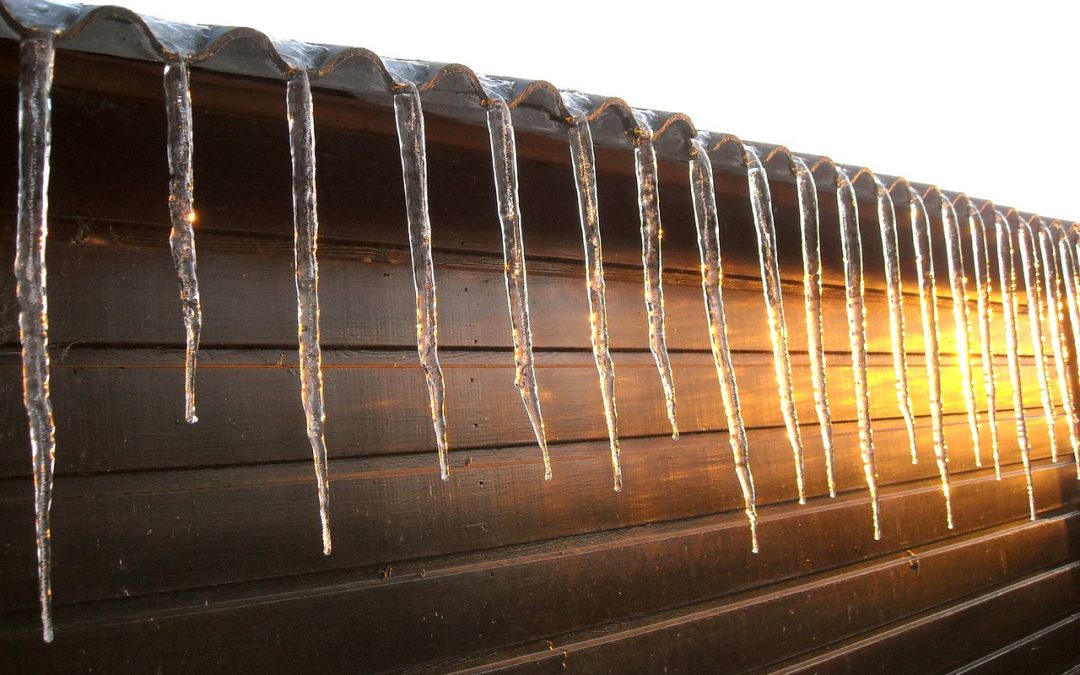
by Ben Johnson | Nov 30, 2016 | Roof Maintenance, Roof Repair
Roof damage can occur at any time of year, but winter weather can be particularly hard on your roof. Not only do winter hazards like snow and ice cause problems with your roof, they also make it difficult to remedy those issues. Here we outline a few of the most common winter roof issues and ways to prevent or repair these damages quickly, to keep your roof winter-proof for the whole season.
Trapped Water
If water gets trapped in your roof, it can cause leaks and damage, no matter the season. Trapped water becomes particularly problematic in the cold months, when trapped water that has been absorbed by roof materials freezes and expands, which can cause cracks. Over the course of a season, this trapped water can freeze and thaw numerous times, each time increasing the damage inflicted on the roof.
To prevent water from getting trapped in your roof, ensure that your roof is properly ventilated. If any minor holes or leaks exist, fix them immediately to prevent water from entering at those points.
Icicles
In addition to the danger posed by falling icicles to animals and people (unless you’re Ralphie from A Christmas Story, then they’re a lifesaver), icicles are bad for the health of your roof. Falling icicles can pull down gutters or other parts of your roof, and hanging icicles can be extremely heavy, causing stress to your roof and contributing to rotting.
Knocking down the icicles yourself can cause just as much damage as letting them fall, so it’s best just to prevent them from forming by keeping your gutters clean and applying heat tape along seams to prevent ice formation.
Strong Winds
Strong winter winds can damage your roof in multiple ways: first, by loosening your shingles and blowing them off your roof; second, by knocking down tree limbs. Tree limbs heavy-laden with ice and snow are prone to falling, and strong winds can bring them crashing down onto your roof.
If shingles or other pieces of your roof have been loosened or blown away by a storm, replace them immediately to preserve the integrity of your roof and avoid damage like trapped water or leaks. Also be sure to trim all tree limbs that are close to the roof, before they become a problem.
Ice Dams
Ice dams are what their name implies: a dam made of ice. Snow and ice melt on your roof due to the internal heat from your house; however, this heat is not evenly distributed across your roof, and melting water that collects in cold areas freezes into a solid mass of ice. These dams can prevent melted water from running off your roof, causing it to pool on the roof, where it can cause leaks.
If there are ice dams on your roof, one prevention method is to blow cold air against the roof from inside the house, preventing snow and ice from melting. If you already have a leak, this can also be used as a stop-gap measure to keep water melting and leaking into the house. Heat tape can also help prevent dams from forming along roof edges to prevent runoff.
There’s never a good time to have roof damage, but winter can be the worst. Be vigilant about avoiding conditions that could be hazardous to your roof and repairing small problems as they arise, to prevent bigger issues in the future. If you need to repair your roof to prepare for winter, contact Werner Roofing today.
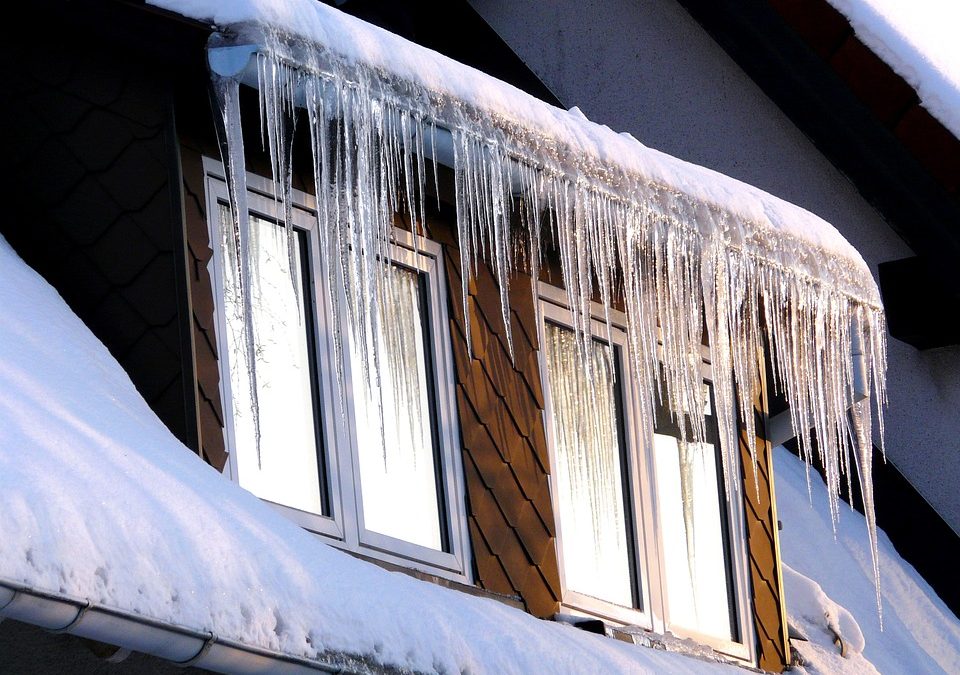
by Ben Johnson | Nov 1, 2016 | Gutter Maintenance, Gutter Systems
Though they can be a bit of a hassle, gutters really do exist for a reason. They divert rain, snow, and debris from your roof, home, and foundation, and can preserve the life of your home for decades if maintained properly. That’s why it’s so important to keep them clean, and why we keep talking about gutter maintenance. Unfortunately, neglected gutters lead to serious issues like ice dams, foundation erosion, molding of your home’s exterior, and even cracks in the foundation. The only way to prevent this is to make sure your gutter system is well taken care of. And while it may be the last thing you want to hear, that all starts with cleaning them out regularly. Here are the steps you should take this season to make sure your gutters are prepped and ready for winter:
Clear Them Out
Probably the most unsavory task on the list, you will have to get up on a ladder at some point to clean out any leaves, twigs, or additional debris. We won’t judge you if you hire someone to do this part; it’s not fun. If you do decide to buckle down and clear them out yourself, all you need is a sturdy ladder, a good pair of gloves, and a gutter scoop or small shovel. Make sure you pay attention to the corners and trouble spots where leaves are more likely to get hung up.
Inspect Gutter Seams and Anchors
While you’re up cleaning out the gutters, make sure you’re observant. You’ll want to inspect each seam on your gutters for leaks, as well as the anchors attaching the gutter to the fascia. If you see any space between the gutter and the fascia, or you spot a leak, you should call a professional to patch up the problem. Any leaks or spaces can lead to water erosion of the fascia, your siding, landscaping, and even foundation. The quicker you get that fixed, the better shape your home will be in for the winter.
Check Your Downspouts
You also want to make sure that any and all downspouts are clear, as a backup could cause your downspout to freeze and crack later in the season. This job is a little easier since you can always use a garden hose with an end attachment to blast out any clumps of leaves or debris. Once the downspouts are clear, double check that they’re directing water at least 10 feet from your house, and that water is flowing away from your home. If not, it’s important to diagnose and fix the issue now, before the weather gets worse. Water that pools up near your foundation can lead to dangerous structural issues.
Inspect Home for Any Structural Damage
It’s fairly easy to check your home for any structural damage while you’re working on the downspouts. As you double-check to make sure that your downspouts are directing water away from you home, make sure you’re looking at your foundation too. If you see any signs of staining, mold, or even cracks in the foundation, it’s time for some repairs. Same goes for the siding and fascia of your home. If you see any signs of water damage, call a professional now to get the issue taken care of before a heavy storm hits.
Install Snow Guards
Here in Michigan, we get more than our fair share of snow. If you’re concerned about the snow building up and freezing in your gutters, you should consider installing snow guards. While they’re absolutely not necessary, they are really great at managing the amount of snow that builds up in your gutters, and ensure your gutter system doesn’t experience any excessive pressure or weight due to the increase of snowfall.
Add Extensions
Remember checking on your downspouts? Well if you’re concerned they’re not directing water far enough away from your home, you might want to think about adding a few extensions. Extensions function to direct the flow of water even farther away from the foundation, easing any worries you may have had about cracks or leaks in your foundation. They also work great if you’re trying to avoid icy patches near your patio. Relatively inexpensive, downspout extensions are a quick and easy solution you can install yourself.
If you have any more questions about getting your roof or gutters ready for the upcoming winter season, make sure to give Werner Roofing a call! We’ve been in the business for decades and would be more than happy to make any repairs you need to your roof or gutter before the snow hits. Give our office a call at 616-844-5382, or request a free estimate online today!
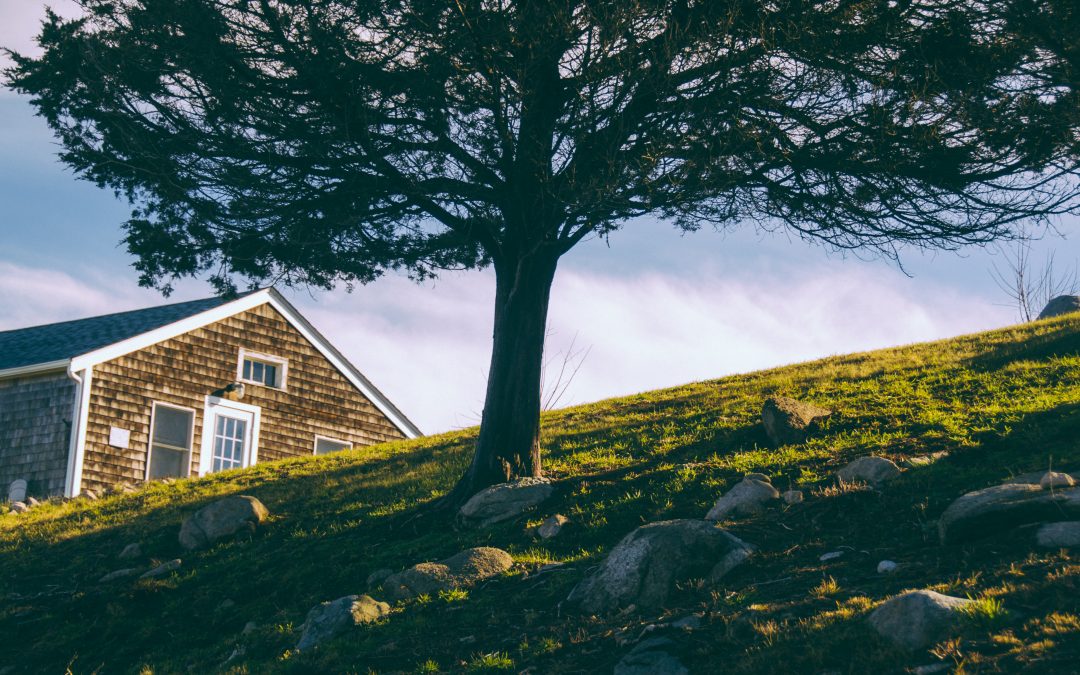
by Ben Johnson | Sep 27, 2016 | Roof Maintenance, Roof Repair, West Michigan Roofing Blog
As fall approaches, you’re likely working on all kinds of home projects to make sure your house is set for winter. Once thing a lot of people don’t think about is the trees around their house. Since we live in Michigan, trees are a pretty commonplace item and don’t usually cause a lot of concern or alarm for the typical homeowner. The problem, however, is that trees can cause a lot of damage to your home, and especially your roof if you’re not paying attention. So we decided to put this blog out, to let you know the dangers trees pose to residential roofs, and how you can do something about it! Don’t just wait for a tree to fall, take action, and protect your home and roof for years to come. Here’s what you need to know:
Overhanging Branches
Branches and limbs can easily break under the weight of snow, or simply snap off in high winds. When this happens, the larger limbs can break or put holes in your roof, while smaller branches often rip off shingles as they fall to the ground, leaving your roof susceptible to the elements and creating leaks.
So, it’s a good idea to go around in the fall and just make sure your house is clear of any overhanging branches. As a general rule, you should have about a 10-foot radius around your house that’s clear of any branches. You should also go around and inspect any nearby trees for signs of rot or decay, as dead limbs are more likely to fall or break. It’s just better to have any potentially threatening limbs and branches out of the way ahead of time, so try to get those threatening branches out of the way before winter hits.
Leaves and Needles
It’s also very important to clean leaves and pine needles off your roof. While you may have to wait until most of the leaves have fallen, if you can get those leaves and any other debris off the roof before it snows, you’ll be in good shape. The problem is that when leaves and needles pile up on the roof, they can trap moisture, which is very bad for your roof. This trapped moisture can then seep into your shingles, and eventually your wooden support beams, creating warping as well as potential leaks and rotting.
Gutters
If you’re up there cleaning off the roof, you may as well take care of your gutters too. We get it, it’s a terrible, thankless chore, but it’s something you’ll have to do before wintertime. Those leaves and needles we just talked about can also get stuck in your gutters, which is bad news for you. When gutters are clogged, water can spill out the gutter trough instead of the downspout, which can erode your foundation and ruin your landscaping. What’s more, leaves and needles prevent melted ice from flowing out of the gutter system, which means if you don’t clean them out, you’re likely to get ice dams this winter.
Falling Trees
Perhaps the most destructive issue when it comes to roofs are fallen trees. Even if they’re just medium or small-sized trees, they can certainly still fall right through the roof of your home, causing major damage that can take awhile to repair. It’s a good idea to check out the trees around your home at least once a year to make sure they’re still living and don’t have any rotting or dying parts. If you do suspect that one of your trees is older, and perhaps not as stable as it used to be, you should consider calling a local tree-cutter who can safely take it down and haul it away for you. We understand it’s not easy to just chop down any old tree, but it is important for the health of your roof that you take down any trees that pose a threat to your home.
Good Trees
Now, we don’t want you to think that you can’t have any trees in your yard! Exactly the opposite, in fact, some trees can be good for your home. If you plant larger trees near the south side of your home, you’ll protect your siding from harsh, hot afternoon sun. Trees can also help keep the temperatures around your home down, ensuring it lasts a little bit longer. Just make sure that you don’t let those shade trees grow too close, and you can have all the trees you like.
If you’re concerned about your roof as we head into fall, be sure to give Werner Roofing a call! Whether you’re worried about your shingles or you’d like new gutters installed, we’d love to help you out. Give us a call at 616-844-5382 or request a free estimate online today!
OUR FREE ROOF INSPECTION
How do you know when it’s time for a new roof? The only way to be sure of your residential roof’s current condition is to have a licensed professional personally inspect it. Werner Roofing is proud to offer free roof inspections for every client, so you can be sure of your roof’s condition. Every Werner Roofing inspection comes complete with our promise: “We won’t recommend or sell a roof replacement unless it’s necessary.”
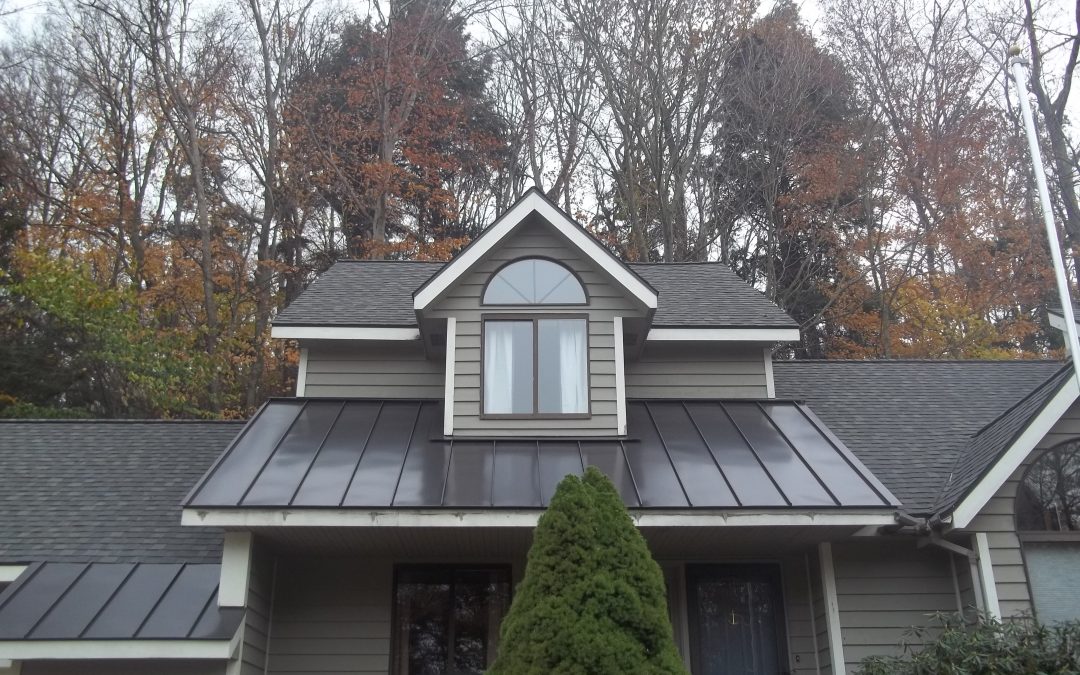
by Ben Johnson | Aug 30, 2016 | Metal Roofing
Metal roofs are durable, energy-efficient, and aesthetically pleasing options for residential homes. Despite their growing popularity, there are still many misconceptions about metal roofs. So, if you were considering this option but were worried about any of the following metal roof myths, we’re here to tell you that they’re just that — myths. Let’s debunk them!
8 Metal Roof Myths Debunked
For years and years, metal roofs have been associated with industrial buildings and barns, making them a less popular choice for residential homeowners. Today, metal roofs are gaining popularity in the residential sector, and for good reasons! Let’s debunk some of the most common metal roof myths so you can make an educated decision.
Myth #1 – Metal Roofs Attract Lightning
Lightning strikes whatever it’s closest to. Lightning is an excess of electricity that’s looking to discharge, and in the case of lightning that heads toward Earth, it’s looking to release into the ground. The quickest way to do that is to find the object closest to it. That’s why telephone poles and trees are struck the most often: they’re the tallest.
While metal is a conductor, it does not “attract” lightning, and the truth is that metal roofs are one of the best roofs to have if your home is struck by lightning. The metal works to disperse the energy safely through your home’s structure. More importantly, metal is noncombustible. If your home is struck by lightning, a metal roof will not catch fire — something that can’t be said for many other roofing materials.
Myth #2 – Metal Roofs Are Noisy When It Rains
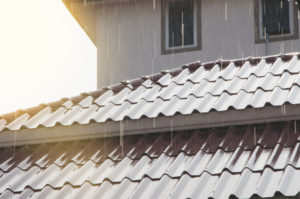
Maybe you’ve been in an old barn when it’s raining, and you noticed the sound of the rain on the roof was just deafening. While that’s true, you shouldn’t expect the same from a house with a metal roof.
Metal roofing materials are paired with a roof deck that adds structure to your roof and insulates sound. The roof deck and the insulation that fills it are what work to muffle the noise on any roof. So, in reality, metal roofs are just as quiet, if not quieter, than any comparable roof system, whether asphalt or clay.
Myth #3 – Metal Roofs Are Easily Dented by Hail
Metal roofs are more durable than asphalt roofs, and while hail can damage any roof when it’s large enough, hail will only dent or damage a metal roof in extreme cases.
Metal roofs are a better choice for residential homes in areas where extreme weather conditions occur since they’re so durable. Asphalt roofs have weatherproofing granules that are easily knocked off by even small-sized hail, which can tarnish the appearance of your roof and affect its ability to keep out the weather. On the other hand, metal roofs will only be visibly damaged by uncharacteristically large hail, making them a better option for extreme weather.
Myth #4 – You Can’t Walk on Metal Roofs

Whether you need to clean out your gutters or want to chop down some overhanging branches, you shouldn’t be afraid to walk on your metal roof. While metal roofs tend to be slightly more slippery and are supported differently than asphalt roofs, they’re still safe to walk on for any home improvement project.
If you aren’t a roofing professional, you should talk to your roofing contractor or the manufacturer about safety precautions. Once you understand the differences, you’ll be good to go.
Myth #5 – Metal Roofs Heat Up Your House
This metal roof myth is just flat-out wrong. Metal roofs work to reflect the UV rays that most asphalt shingles absorb. Additionally, metal roofs release solar heat much more quickly than asphalt roofs, reducing the heat load on your house.
When you have a metal roof properly installed, it will maintain a more consistent interior temperature, and you can expect energy savings on heating and cooling costs of up to 40%!
Myth #6 – Metal Roofs Will Rust
Technology has come a long way in the roofing industry. Metal roofs used to be solid metal sheets and did experience rust, but this is no longer the case.
Today’s metal roof materials are made specifically for roofing, which means they’re constructed to withstand various types of weathering, including rusting. Today’s metal roofs are bonded with a galvanized coating formed from advanced alloys to resist rusting. They’re then painted with special roofing paint made to withstand the effects of weathering, which means that once you install a metal roof, it will remain rust-free for decades.
Myth #7 – Metal Roofs Are Too Heavy for My House
If you think metal roofs are heavier than other materials, you’ll be excited to learn that they’re around 50% lighter than a standard asphalt roof. That makes metal the most lightweight roofing option out there!
Often, when homeowners need their home re-roofed but don’t want to tear off their old asphalt roof, a metal roof is installed on top of the existing roof. This is done because metal roofs are considerably lighter and will maintain the weatherproofing qualities of the roof without threatening the home’s structural integrity. If you have ever been concerned about the structural integrity of your home’s roof deck or if your home is getting older, a metal roof may be your best option.
Myth #8 – Metal Roofs Are Too Expensive
If you’re just looking at upfront costs, a metal roof may cost more initially than an asphalt roof. However, this doesn’t account for the lifetime cost of either roof option.
When you install an asphalt roof, it may be cheaper upfront, but you also need to consider repairs to be made: shingles that blow off, curling shingles that expose your home, mold, and rot that occur when the shingles warp, and the inevitable re-roofing process that must occur after 20 years at the most.
Metal roofs are guaranteed to last 40-60 years and require little to no maintenance. There’s no upkeep, no shingles to replace, and no leaks to fix — just solid metal sheets guaranteed to last you for decades. So when you consider the lifetime costs of both asphalt and metal roofs, metal roofing is comparably cheaper.
Invest in a Metal Roof With Werner Roofing
Now that you know all the common misconceptions about metal roofing and its reality, you might be considering investing in a new metal roof for your home. If you’re looking into metal roofing or think it’s time for a new roof for your home, Werner Roofing is West Michigan’s first choice. Home of West Michigan standing seam roofs, we’re the local expert on metal roof installation, and we’d love to help you out!
Give us a call at 616-844-5382, or submit a request for a free estimate online!





